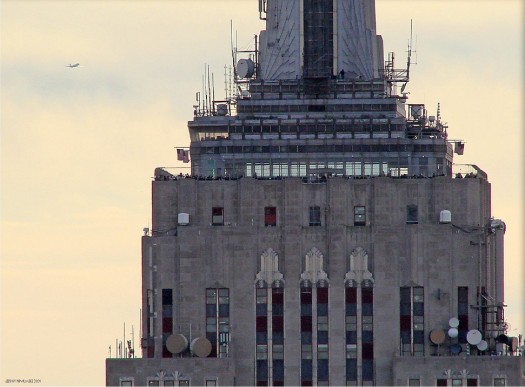
We are celebrating 15 years — and counting — of stories that are deeply researched and deeply felt, that build a historical record of what the city has been.
We are celebrating 15 years — and counting — of stories that are deeply researched and deeply felt, that build a historical record of what the city has been.

Empire State Building. Photo by Flickr user Jorbasa.
A “skyscraper showdown” is in headlines this week, making contentious building projects a recurring theme for the summer. This time we have 15 Penn Plaza vs. the Empire State Building. The City Council has approved plans for a 67-story tower to be built two blocks away from, and just 34 feet shorter than, the iconic Empire State Building. Detractors claim New York’s skyline will be ruined and views of the city’s most recognizable structure will be obstructed, and the sole councilperson to vote against the project, Charles Barron, dissented due to what he saw as an insufficient number of contracts set aside for minority and women-owned businesses; supporters point to job creation, economic development, and the constant growth and change intrinsic to our fair city. Meanwhile, Brian Lehrer asks how this hasn’t come up before and over on Co.Design, Ken Carbone offers up a few alternative ways for the structure to stake its claim on the skyline.
It’s no surprise, thanks to the dysfunctions of Albany and the (many) gubernatorial scandals of recent years, that this year’s candidates for Governor of New York are promising reform and change. But on one topic of great concern to the NYC metropolitan area in particular, public transit and the extraordinary debt faced by the MTA, the candidates’ platforms are unclear. In an op-ed in the Albany Times Union, John Petro and Dan Morris of the Drum Major Institute point to Albany and the state government’s inadequate investment in public transit as a primary cause of the MTA’s now-spiraling deficits and they call on the candidates to clarify their platforms and voice their ideas. In the words of Petro and Morris, “Our public transit system is an irreplaceable asset and an invaluable part of the nation’s infrastructure that should be protected. Leaders in state government better start treating it that way.”
Early last year we talked to Colleen Werthmann and Michael Premo, two of the minds behind Brooklyn at Eye Level, a theater performance with a journalistic approach that explored all aspects of and viewpoints on Atlantic Yards. This fall, the investigative theater company The Civilians is updating the material gathered for that production to present In the Footprint. Again bringing interviews and documentation about the development to the stage through dance, music and spoken word, The Civilians offer a multifaceted portrait of a complex project. In the Footprint will run from November 12 through December 11, 2010 at the Irondale Center in Fort Greene, Brooklyn.
The Center for Urban Pedagogy has released its latest video, produced by a group of students from Brooklyn’s Walt Whitman Middle School who ask: Why are there so many empty lots in our neighborhood? The Good, the Bad, and the Empty, which premiered on Places this week, takes us on a vacant lot tour of Flatbush and follows the students as they question local residents, landowners, community activists, and city officials about the existing conditions of the unused lots and why they were left dormant in the first place. The students find everything from trash-strewn, abandoned “construction sites” to well-tended community gardens, and share their ideas to activate these vacant, underutilized spaces.
The Roundup keeps you up to date with topics we’ve featured and other things we think are worth knowing about.
The views expressed here are those of the authors only and do not reflect the position of The Architectural League of New York.